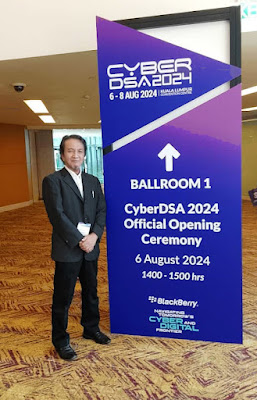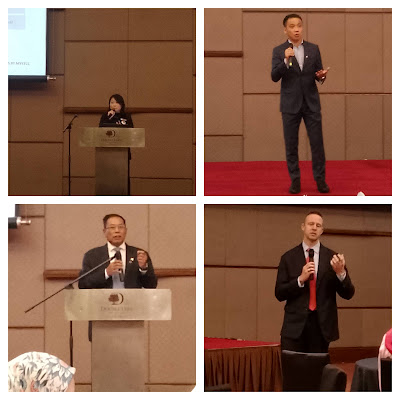Please also read my other articles about money laundering and anti-corruption.
Detecting fraud is usually linked money laundering, and corruption in the banking and financial sectors is crucial for maintaining the integrity of the financial system. there are strategies and technologies need to be taken into account.
1. Fraud Detection
a. Transaction Monitoring Systems (TMS)
These systems analyze transaction patterns in real-time or near real-time to detect suspicious activities. They use predefined rules, statistical models, and machine learning algorithms to flag anomalies. This will enable banks to proactively detect and investigate suspicious activities, helping to prevent them from escalating into more significant financial crimes. By identifying and halting illegal transactions early, banks can avoid potential losses and reduce the risk of regulatory scrutiny.
b. Anomaly Detection (AI)
Machine learning techniques (AI), such as supervised and unsupervised learning, are employed to detect deviations from typical behavior. These methods can identify unusual patterns that may indicate fraud. Machine learning models has proven effective in detecting anomalies by identifying unusual patterns in vast datasets. These AI models continuously learn from transaction data, adapting to emerging fraudulent schemes in real-time.
c. Behavioural Analytics
Sometimes, a user behaviour can also indicate fraudulent activity. These include frequent login times, transaction types, and sometimes at different locations and mixture of transactions (frequent use of cash deposit machine with significantly large amounts at different locations and online transfers/interbank transfer)
d. Multi-factor Authentication (MFA)
Implementing MFA helps in preventing unauthorized access to banking systems, which is a common precursor to fraud. It can pose problems to the customers with too many authentications and verifications but it will protect both customers and bank from fraud and scamming. MFA adds an extra layer of security beyond just a password. Customers must provide two or more verification factors—such as something they know (a password), something they have (a smartphone or security token), or something they are (a fingerprint or facial recognition). This makes it much more difficult for unauthorized users to gain access, as even if they manage to obtain one factor, they would still need the additional factor(s) to successfully log in.
2. Money Laundering Detection (Anti-Money Laundering or AML)
a. Know Your Customer (KYC) and Customer Due Diligence (CDD)
KYC involves verifying the identity of customers, while CDD involves ongoing monitoring of their transactions to help identify potentially suspicious behavior linked to money laundering.
b. Suspicious Activity Reporting (SAR)
Banks are required to file SARs for any transactions that they suspect may involve money laundering. These reports are then reviewed by financial regulatory authorities such as Bank Negara.
c. Risk-Based Approach
Financial institutions categorize customers and transactions based on their risk level. Higher-risk transactions are monitored more closely to detect potential money laundering.
d. Transaction Structuring Detection
Money launderers often structure transactions in small amounts to avoid detection. Advanced algorithms can detect patterns of structuring across multiple accounts or over time.
e. Beneficial Ownership Identification
It's essential to determine the true owners behind complex corporate structures, as money launderers often hide behind layers of corporate entities.
3. Corruption Detection
a. Conflict of Interest Checks
Regular audits and checks can help identify situations where employees or executives of the bank might have conflicts of interest, potentially leading to corrupt activities via specific client favoritisms.
b. Vendor and Third-Party Risk Management
Financial institutions should monitor and evaluate the integrity of vendors and third-party relationships to detect corrupt practices, such as bribery or kickbacks.
c. Whistleblower Programs
Encouraging employees to report corrupt activities internally through protected channels can lead to the early detection of corruption.
d. Internal Audits and Controls
Regular internal audits can identify weaknesses in financial controls that could be exploited for corrupt purposes.
4. Technology and Data Analytics
a. Artificial Intelligence and Machine Learning:
AI and ML are increasingly used to detect complex fraud, money laundering, and corruption schemes. These technologies can analyze large datasets and identify patterns that humans might miss.
b. Blockchain Technology
Blockchain’s transparency and immutability make it a powerful tool in preventing fraud and money laundering, especially in tracking the provenance of funds.
c. Big Data Analytics
Analyzing vast amounts of structured and unstructured data helps in identifying suspicious activities across different systems and jurisdictions.
d. Network Analysis
Analyzing relationships between different entities (e.g., customers, accounts, transactions) can reveal hidden connections that may indicate fraudulent or corrupt activity.
5. Regulatory Compliance and Reporting
a. Regulatory Technology
Regulatory Technology help financial institutions comply with regulatory requirements by automating the monitoring, reporting, and auditing processes.
b. Continuous Training and Awareness
Financial institutions must regularly train their employees on the latest fraud, AML, and anti-corruption techniques and regulations to ensure vigilance and compliance.
c. Collaboration with Law Enforcement
Financial institutions often work closely with law enforcement agencies such as Bank Negara Malaysia, Security Commission, the Police (PDRM), Company Commission etc. to share information and intelligence, helping to detect and prevent illicit activities.
6. Challenges and Emerging Threats
a. Cyber Fraud
As banking becomes increasingly digital, cyber fraud (e.g., phishing, hacking) poses a significant threat. Institutions must continuously update their cybersecurity measures.
b. Cross-Border Transactions
Detecting fraud and money laundering in cross-border transactions is challenging due to differing regulations and the complexity of tracking funds across multiple jurisdictions.
c. Cryptocurrency Risks
The rise of cryptocurrencies presents new challenges for detecting money laundering, as these digital assets offer a degree of anonymity and are harder to trace.
Conclusion
Detecting fraud, money laundering, and corruption requires a multi-faceted approach that combines advanced technology, strict regulatory compliance, and robust internal controls. As threats evolve, financial institutions must stay ahead by adopting innovative detection methods and continuously improving their risk management strategies.






























